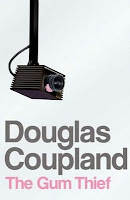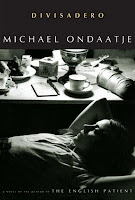Two great children's authors go head-to-head. Who will win? I'm voting for Margaret Wise Brown, but Maurice Sendak is pretty amazing too.
The Book Mine Set: The Great Wednesday Compare #5- Margaret Wise Brown VERSUS Maurice Sendak
Wednesday, March 31, 2010
Wednesday, March 24, 2010
Avatar
Here is my problem. It has nothing really to do with the movie itself. It is the same problem I had when I went to see Watchmen just over a year ago. The movies themselves aren’t really anything alike, but when I’m watching a movie and there is a small child making sounds of unhappiness it is very distracting. You can read what happened last year at Watchmen in my previous post. At Avatar there was a five-year-old girl watching the movie, presumably with her parents and she didn’t seem very happy about it. Avatar isn’t a super violent movie, but a guy does get shot through the chest with a giant arrow in a very obvious way. There are battle scenes and people die. One year later I am asking again. PLEASE, do not take your children to movies that are going to scare them. I can speak from experience; your child will have nightmares. It also disturbs other people in the theatre. If your child starts to cry it should be obvious that they’re not enjoying themselves. It makes me so angry; it taints the movie for me.
Tuesday, March 23, 2010
Monday, March 22, 2010
Now I Lay Me

 Now I Lay Me is the last story in Ernest Hemingway’s collection, Men Without Women. The collection is one of Hemingway’s earliest works and his second book of short stories. Hemingway was one of the most influential writers in American literature; some even see him as the ultimate American writer. Hemingway was not one for long, flowery passages describing a summer day or a cottage on a hill. He used quick exchanges and short sentences. Now I Lay Me is a great example of his ability to create forward momentum. Hemingway also wrote what he knew; this story deals with a shell shocked soldier from the Great War (aka World War I, when he published this story in 1925, there was no World War II.) Many have said that Hemingway wrote a fictionalized version of his own life, a “what if” idea. If you know anything about Hemingway’s experiences as a soldier and as someone who was involved in more that one war, you can see that reflected in his work. This story and the entire collection is a must for any Hemingway enthusiast or even a beginner wanting to ease into his work.
Now I Lay Me is the last story in Ernest Hemingway’s collection, Men Without Women. The collection is one of Hemingway’s earliest works and his second book of short stories. Hemingway was one of the most influential writers in American literature; some even see him as the ultimate American writer. Hemingway was not one for long, flowery passages describing a summer day or a cottage on a hill. He used quick exchanges and short sentences. Now I Lay Me is a great example of his ability to create forward momentum. Hemingway also wrote what he knew; this story deals with a shell shocked soldier from the Great War (aka World War I, when he published this story in 1925, there was no World War II.) Many have said that Hemingway wrote a fictionalized version of his own life, a “what if” idea. If you know anything about Hemingway’s experiences as a soldier and as someone who was involved in more that one war, you can see that reflected in his work. This story and the entire collection is a must for any Hemingway enthusiast or even a beginner wanting to ease into his work.Thursday, March 11, 2010
The Gum Thief
 The Gum Thief was brilliant. Douglas Coupland has amazing skill at creating such great characters. Roger and Bethany feel like real people. Even the secondary characters have a reality about them. Doesn’t Kyle remind you of someone you dated? You can see DeeDee as someone’s mother. Roger and Bethany are not generic. They are individuals who are shaped by their circumstances.
The Gum Thief was brilliant. Douglas Coupland has amazing skill at creating such great characters. Roger and Bethany feel like real people. Even the secondary characters have a reality about them. Doesn’t Kyle remind you of someone you dated? You can see DeeDee as someone’s mother. Roger and Bethany are not generic. They are individuals who are shaped by their circumstances.
It took place (mostly) in Staples! It’s one of the things that drew me to the novel. I worked at Staples a long time ago. I’m sure employees of the big box stores can relate to what Bethany and Roger say. Maybe everyone else will discover something. When a customer goes in, they don’t know that their sales associate is a budding novelist. No one knows who’s divorced, who has children or who has lost a loved one. Box store employees are anonymous. I think it was a wonderful idea to have a non-generic setting. Having such a specific location really makes you think about the people there.
I don’t think I have anything negative to say. I enjoyed the letter writing style. I thought Roger’s Glove Pond was strange and funny. I liked how “real life” events were making their way into the fictional novel. I even love to hate the person who gives Roger a C-. She hates all the things that make this novel wonderful. In case it’s not obvious, I loved The Gum Thief.
Sunday, March 07, 2010
The Host
 The Host is the “other” novel by Stephenie Meyer. It’s not about vampires and has nothing to do with werewolves. The Host is about life post-alien invasion. It was an invasion so quiet, humans didn’t realize it was happening. Once they did, it was too late. The Host doesn’t focus on the invasion itself, that’s the past. It deals the present and the future.
The Host is the “other” novel by Stephenie Meyer. It’s not about vampires and has nothing to do with werewolves. The Host is about life post-alien invasion. It was an invasion so quiet, humans didn’t realize it was happening. Once they did, it was too late. The Host doesn’t focus on the invasion itself, that’s the past. It deals the present and the future.I was pleasantly surprised by how much I liked the novel. Friends had warned me that The Host wasn’t as good as Twilight. Maybe they spent too much time comparing the stories. They are different in content, as well as characters. I don’t think there is anyone like Uncle Jeb in Twilight. I don’t know if someone who really likes vampire fiction is going to like a story about aliens. Though, on her website, Stephenie Meyer says that The Host is science fiction for people who don’t like science fiction.
If you’ve read her other books, however, you can’t help but make a comparison. There is a love triangle, though it might be more of a square. There’s a family member that Wanderer, the main character, is concerned about. Meyer’s quick pace and eventful plot keeps you racing through the [over] 600 pages. The Host is more mature in its language, though it has been a while since I read her other books. I like Wanderer more than Meyer’s other heroine. Wanderer has a strength, determination and conviction that Bella lacked, though maybe the movies have coloured my view. Yes, she a lot of what she does is out of love, but she also thinks of the greater good. Wanderer has a great altruistic quality.
Would fans of Twilight like The Host? I certainly do. I suppose it depends on how diverse their tastes are in books. It’s being made into a movie, so I’m sure Meyer and the people producing the movie hope so. For those who have never read Meyer’s other novels, The Host is a great story about an alien’s quest among humans and human survival among the aliens who now inhabit the Earth.
Wednesday, March 03, 2010
Divisadero
 I just finished Divisadero, the latest in fiction by Michael Ondaatje. Divisadero is a beautifully written novel. The language is fluid and emotional. Perhaps it is too emotional or sentimental, at least with the last third of the novel. The first part of the novel introduces the reader to Anna and her family in the 1970s and it takes us from their childhood, through their personal evolutions after the family is splintered. I spent the second part of the book longing to know what happens to Anna, Claire and Coop.
I just finished Divisadero, the latest in fiction by Michael Ondaatje. Divisadero is a beautifully written novel. The language is fluid and emotional. Perhaps it is too emotional or sentimental, at least with the last third of the novel. The first part of the novel introduces the reader to Anna and her family in the 1970s and it takes us from their childhood, through their personal evolutions after the family is splintered. I spent the second part of the book longing to know what happens to Anna, Claire and Coop.In the second section, Ondaatje takes us into the life of the author Anna is studying. The life of this author is connected to Anna’s current lover, who knew him as a boy. It’s an interesting story. The style changes here, the story seems to float along, moving away from the excitement and urgency evoked by the first section.
I feel as though Divisadero should have been two novels. They can remain connected, like In The Skin Of A Lion and The English Patient. There are definite parallels between the life of Anna and the life of the author she studies. There are fractured families, secret love affairs and solitude. The narration changes throughout the entire novel, but that’s easy enough to follow; each character has their own voice. It’s the two stories, yes connected, but not necessarily needing to be in the same book. I might have liked it better it the story came back to Anna, Claire and Coop in a more decisive way. Though I liked it, I find myself unsatisfied with the ending.
Subscribe to:
Posts (Atom)